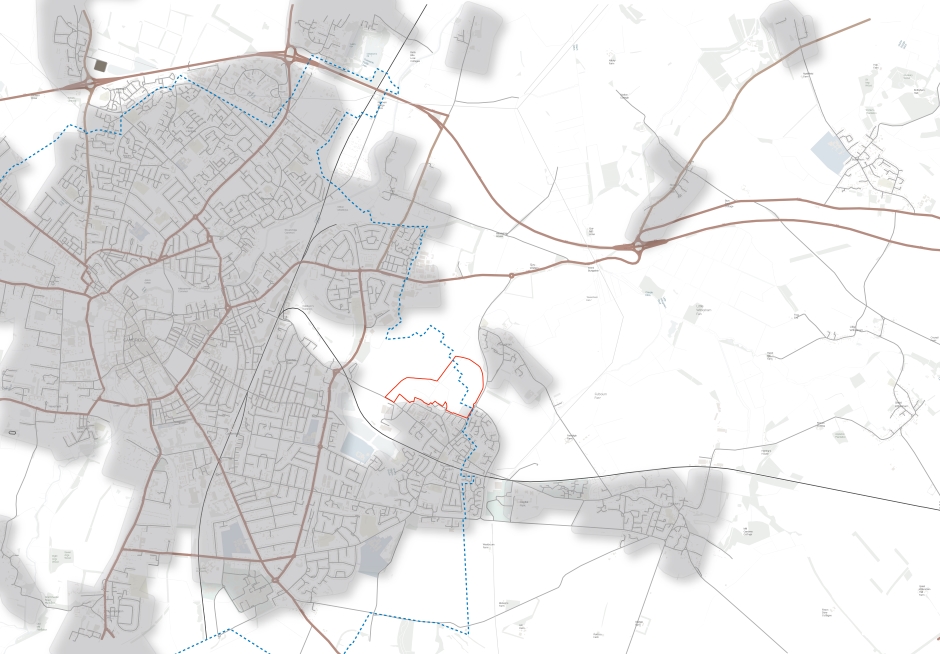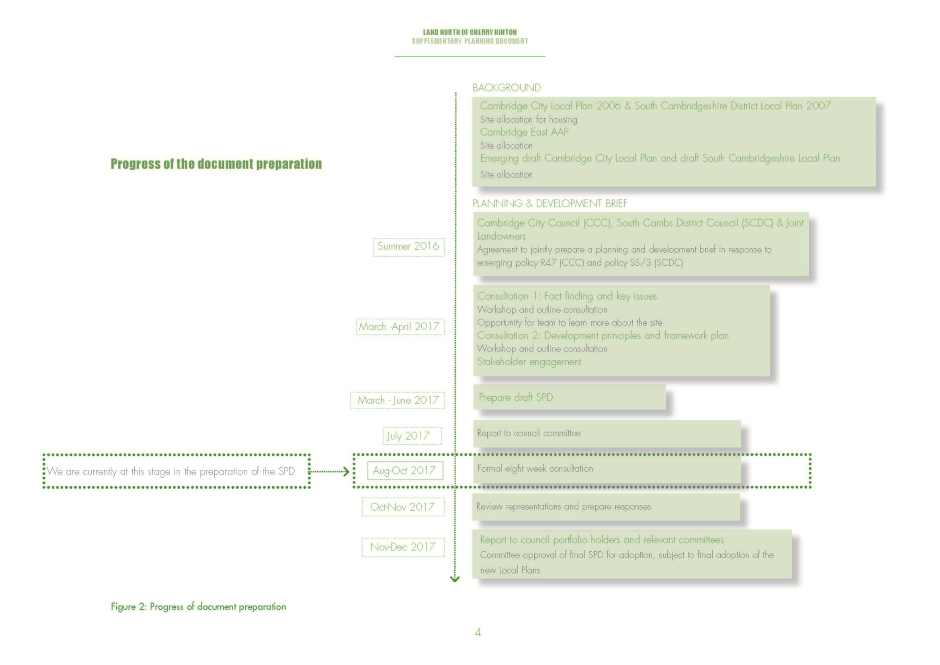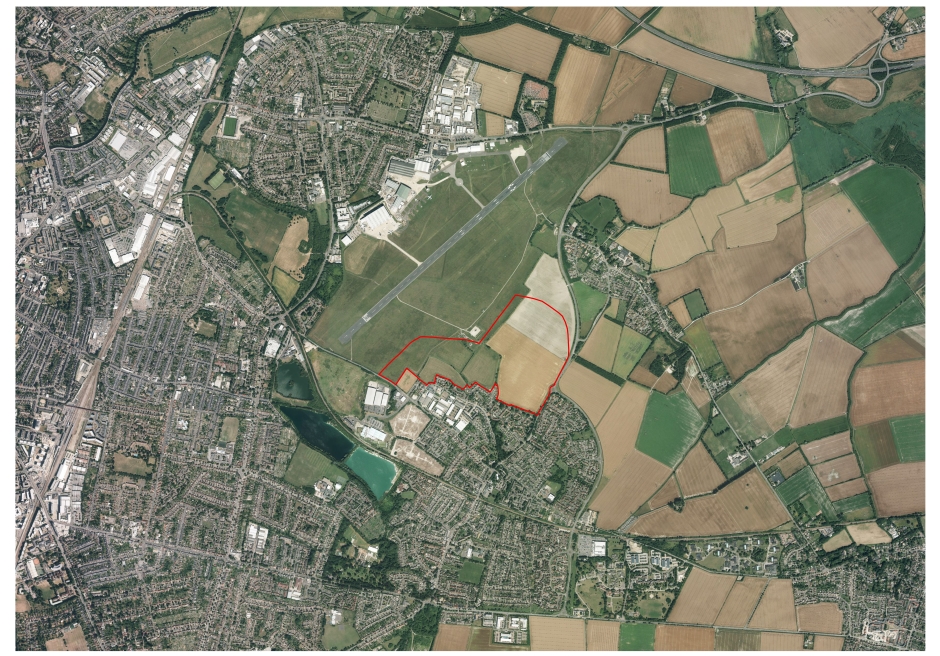Land North of Cherry Hinton SPD
1. Introduction
Overview of the Site
(3) The Land North of Cherry Hinton (LNCH) is located between Airport Way and Cambridge Airport, north of Coldhams Lane.
LNCH comprises 47ha in area. The largest part of the site is currently in agricultural use with the western-most areas comprising part of the airport land. The site has been allocated for new housing supported by the emerging Local Plans and the Cambridge East Area Action Plan (AAP). LNCH presents an opportunity to assist in meeting the demand for housing in South Cambridgeshire.
(2) The surrounding area is predominately characterised by residential neighbourhoods of Cherry Hinton to the south, Teversham to the north and Cambridge to the west. The remaining land of Cambridge Airport borders the western boundary, with agricultural land to the immediate north. An industrial estate lies to the south of the site within Cherry Hinton. It is recognised, in principle, that residential-led development of the land adjoining the airport can now come forward without prejudicing Marshall's Aerospace business operations at Cambridge Airport. Where necessary, appropriate mitigation of environmental and health impacts will be required within any proposal to ensure future residents are provided with a satisfactory living environment.
Purpose of the development framework
(2) This Supplementary Planning Document (SPD) is a planning guidance document which will support policy in both the draft Cambridge City Local Plan and the draft South Cambridgeshire District Local Plan. SPDs fall within one of two categories: the first relates to guidance supporting a city or district-wide objective; the second is guidance for a specific site or area development brief including framework master plans. This SPD falls within the second category.
This document will form a
material consideration to be taken into account by
Cambridge City Council and South Cambridgeshire District
Council who, together with Cambridgeshire County Council,
appoint members of the Joint Development Control Committee
(JDCC) to determine major applications on the fringes of
the City. The JDCC will determine the eventual planning
application for LNCH.
This SPD has been prepared in line with the requirements of the Town and Country Planning (Local Planning) (England) Regulations 2012.
Structure of the development brief
The SPD is structured as follows:
- Chapter 1 provides an introduction to the document and
illustrates the process for achieving a high quality
development.
- Chapter 2 provides an overview of the planning policy
context.
- Chapter 3 provides an analysis of the site and the
wider area.
- Chapter 4 sets out the vision for the site.
- Chapter 5 sets out the framework principles for
achieving the vision and masterplan.



Achieving a high quality development
(3) The Land North of Cherry Hinton will be a vibrant, high-quality and distinctive extension to the existing settlement, reflecting and enhancing the special character of the surrounding area, whilst working in synergy with Cambridge as a whole.
The vision will be realised through the following process, for which this SPD forms the first step. The initial vision and development principles outlined within this SPD should be built upon and strengthened through this process to establish a compelling narrative for the new neighbourhood with a strong identity.
SPDs articulate and provide more detailed guidance on the policies in the Local Plan and form part of a process that ensures the delivery of a high quality development. SPDs will provide an overview of the site, its constraints and opportunities, and will set out an initial vision, the framework principles and framework master plan.
Stage 2: Outline planning application
An outline planning application will build upon the vision and objectives set out in the SPD and will include a suite of technical assessments, defined at Environmental Impact Assessment (EIA) scoping stage. The illustrative master plan will provide details on certain aspects of the proposal to demonstrate technical feasibility, as well as setting out the strategic vision for the site.
An outline planning application enables the principle of development to be agreed while conditioning "reserved matters" for subsequent approval. A series of parameter plans forming part of the outline application will guide the development and help deliver the vision.
A design code will set rules for the design of the new development and will provide a tool to achieve the objectives and characters set out in the outline proposals. Design codes will typically follow an outline planning application and require approval prior to submission of the reserved matters. Design codes will typically comprise the following:
- The nature and purpose of the document and the planning context
- Summary of the local context, and the characteristics and constraints that have influenced the master plan and design code
- Comprehensive design guidelines and coding for the master plan area including, among others, density and building heights, spatial arrangement and block types, building types and materials palette.
Detailed design development proposals at reserved matters stage will deal with some or all of the outstanding details of the outline application proposal, focusing on compliance with design code and outline parameters in respect to layout, scale, appearance, access and landscaping.
